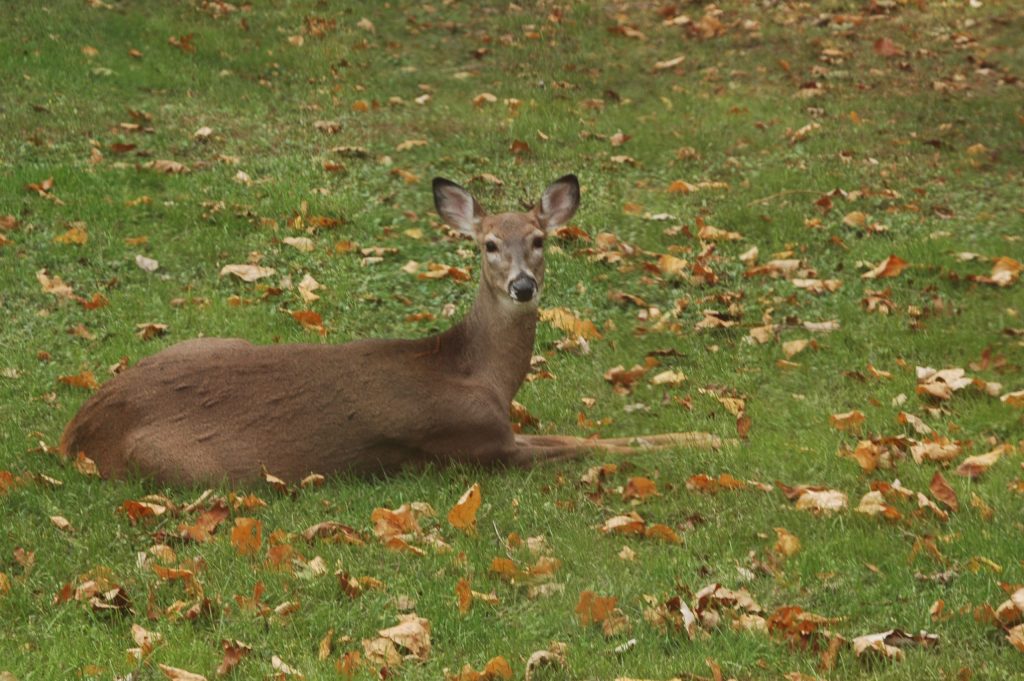Compared to bucks, there are twice as many does in the woods. Yet they are largely ignored.
As a deer manager, females are much more important than males, but they aren’t nearly as popular. Jeannine has lamented many times about antler vision causing bucks to get all the attention! [Don’t get me started! Without does, there would be no rut or bucks making questionable decisions.]
If you can stand it, we’ll take a closer look at the movements of this invisible driver of the rut.
Here are two females in early October. You’ll notice that compared to the bucks, they have more locations where movement is <5 yards/hr.
What happens as the peak of the rut gets closer (first 2 weeks of November)?
See anything different? You should.
As we all know, buck movements increase during the rut. For the four bucks we investigated in recent blog posts, here is a graph of their movements by 2-week periods.

For every buck, their speed was lower in early October than in November.
Now look at the females.

There is no change in one female and the other actually slows down during the first 2 weeks of November. If bucks are running around looking for females to breed, there is no need for a female who wants to be found to do the same thing. By restricting her movements, she is easier to find. [And I’d say a lot wiser 😉]
If you are lost in the wilderness, STOP and let yourself be found. Does aren’t lost. They know exactly what they are doing.
Female movements are just as interesting and insightful as those of bucks. Understanding the behavioral ecology of white-tailed deer means more than just studying the ones that grow bones on their head!
-Duane Diefenbach
If you would like to receive email alerts of new blog posts, subscribe here.
And Follow us on Twitter @WTDresearch
